Get out your bucket list (if you're old enough to have one) or your to-do list. Either way, Hot air ballooning should be on it.
It's an amazing, almost out-of-body experience. Except when the burners are firing there is complete silence. Plus, you feel as though you're standing on air... because you are. Almost. There's nothing more than a between the soles of your shoes and thin air but a few layers of woven Kooboo and Palambang cane. Photo source: US Department of Transportation
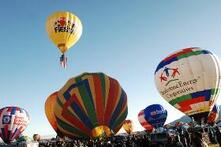
THE BROTHERS MONTGOLFIER
Hot air ballooning is the oldest successful form of man-made flight, dating back to 1783. Even before that, the two brothers named Joseph-Michel and Jacques-Etienne Montgolfier (successful paper manufacturers) began experimenting with paper vessels elevated by heated air after they observed that heated air flowing directly into a paper or fabric bag made the bag rise.
 Joseph-Michel and Jacques-Etienne Montgolfier – Photo source: https://www.famousinventors.org/montgolfier-brothers
Joseph-Michel and Jacques-Etienne Montgolfier – Photo source: https://www.famousinventors.org/montgolfier-brothers By 1782, the Montgolfier's constructed an ‘aerostat’ designed for lifting people into the air which they named ‘Seraphina’. The craft – and I use the term loosely -- was a 40 foot envelope made of linen lined with paper. Constructed in multiple sections, it was held together by some 2000 buttons.
After some additional testing, the first public showing took place in Annonay (near Lyon, France) on June 4, 1783. The brothers launched their balloon with no one aboard from the town marketplace. It rose to a height somewhere between 5,500 and 6,500 feet, remained aloft for 10 minutes, and traveled more than a mile. The Aerostat Reveillon
http://levenvandelucht.blogspot.com/2016/08/lichter-dan-lucht.html
photo source: https://2.bp.blogspot.com/Montgolfier_brothers_flight.jpg
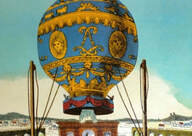
They constructed a balloon about 30 feet in diameter made of taffeta and coated with a varnish of alum for fireproofing. Réveillion's influence was apparent as the balloon was decorated with golden flourishes, zodiac signs, and suns (symbolizing King Louis XVI).
| A SHEEP, A DUCK, AND A ROOSTER There was some concern about the effects of high altitude on living beings, and the king proposed a test using prisoners. | |
The balloon, named Aerostat Reveillon, and its passengers lifted off on Sept. 19, 1783. The flight lasted 8 minutes and was witnessed by King Louis XVI, Marie Antoinette, and a crowd of 130,000. The balloon stayed airborne for fifteen minutes, flew about 2 miles, and landed safely. No word on how they measured the height or the fate of the sheep, duck, and rooster.
The brothers must have been pretty clever. They convinced Pilatre de Rozier and the Marquis d'Arlandes to be the first people to travel in a hot air balloon. You notice it wasn't the Montgolfiers taking flight in November of 1783. De Rozier and d'Arlandes are reported to have traveled 7 miles in a have hour at the height of 3,000 feet.
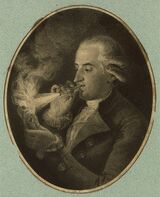 Francis Pilatre de Rozier blowing hydrogen into a flame National Air and Space Museum – Smithsonian Institution
Francis Pilatre de Rozier blowing hydrogen into a flame National Air and Space Museum – Smithsonian Institution In June of 1785, he and a friend (Pierre Romain) embarked on a trip from Boulogne to England. At an altitude of about 2,950 feet, the hydrogen, expanded by the hot air, exploded. The two men achieved the dubious distinction of being the first men to lose their lives in a manned flight.
The Champagne Tradition
One of the early traditions which is still practiced is for the pilot to present the landowner on whose property you make your final landing with a ceremonial bottle of champagne.
This tradition reputedly originated with these first balloonists. As you can imagine, the early hot air balloons were filled with not just hot air but smoke, due to a slight mistake by scientists of that era who believed the lift was due to the smoke rather than the heat.
Because of that, the first balloonists landing in peasants' farm fields were likely to be attacked with stones and clubs and pitchforks, since they were obviously fire-breathing monsters. French peasants came with a certain level of sophistication, however. Early French balloonists found the peasants easily distracted, and much more pleasant hosts, if the monster's human occupants offered them a glass of champagne. □
Sources:
http://en.wikipedia.org/wiki/Hot_air_ballooning
http://www.hot-air-ballooning.org/guide_hot_air_ballooning_hints_and_tips.asp
http://ezinearticles.com/?Hot-Air-Ballooning---Different-Techniques-To-Keep-In-Minds&id=5741808
http://www.eballoon.org/balloon/basket.html
http://www.pilatre-de-rozier.com/
http://www.eballoon.org/history/history-of-ballooning.html
http://www.spartacus.schoolnet.co.uk/AVrozier.htm
http://www.balloon.co.za/Balloon/
http://www.hotairballoonsafaris.co.za/
https://www.space.com/16595-montgolfiers-first-balloon-flight.html
https://empoweryourknowledgeandhappytrivia.wordpress.com/2015/10/08/who-invented-the-first-hot-air-balloon/
https://www.famousinventors.org/montgolfier-brothers

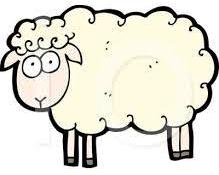

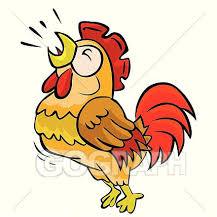
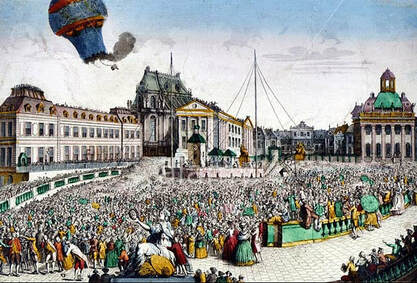
 RSS Feed
RSS Feed